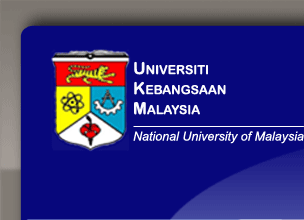Model Berstruktur Pengukuran Konstruk Kebergunaan Perisian Kursus Matematik
NORAIDAH SAHARI @ ASHAARI, HAIRULIZA MOHD. JUDI, ABDUL AZIM ABDUL GHANI, MOHD HASAN SELAMAT & AIDA SURAYA MD. YUNUS
ABSTRAK
Penyelidikan bagi membangunkan instrumen yang piawai, memerlukan dua langkah. Pertama, kajian penjelajahan bagi membentuk model ukuran melalui analisis data secara empirik daripada suatu populasi. Kedua, kajian pengesahan yang menguji model ukuran hipotesis terhadap data yang dikumpulkan daripada populasi yang sama. Dalam kajian awal, penyelidik telah menghasilkan satu model hipotesis dan satu set soal selidik melalui beberapa pengujian termasuk ujian kebeolehpercayaan dan ujian kesahan kandungan. Instrumen terdiri daripada tujuh faktor dan 64 metrik. Kertas ini membincangkan langkah seterusnya iaitu mengesahkan konstruk instrumen menggunakan analisis faktor penjelajahan seterusnya menghasilkan model berstruktur bagi kebergunaan perisian kursus matematik melalui analisis faktor pengesahan.
Kata kunci: Analisis faktor penjelajahan, Analisis faktor pengesahan, Konstruk kebergunaan, kepenggunaan, kefungsian, kecekapan, permodelan persamaan berstruktur.
ABSTRACT
Development of a standard instrument needs two steps. The first step is an exploratory study to construct a hypohtesis measurement model through an empirical data analysis from a population. Second, confirmatory study which tests the measurement model on the collected data from the same population. Early studies, researchers had constructed a hypothesis model and a set of questionnaire through several testing including reliability and content validity test. The instrument consists of seven factors and 64 metrics. This paper discusses the next step of the study which is, to validate the construct of the instrument using exploratory factor analysis and finally to produce a structural model of usefulness mathematics courseware through confirmatory factor analysis.
Keyword: Exploratory factor analysis, confirmatory factor analysis, usefulness construct, usability, functionality, efficiency, Structural Equation Modeling.



